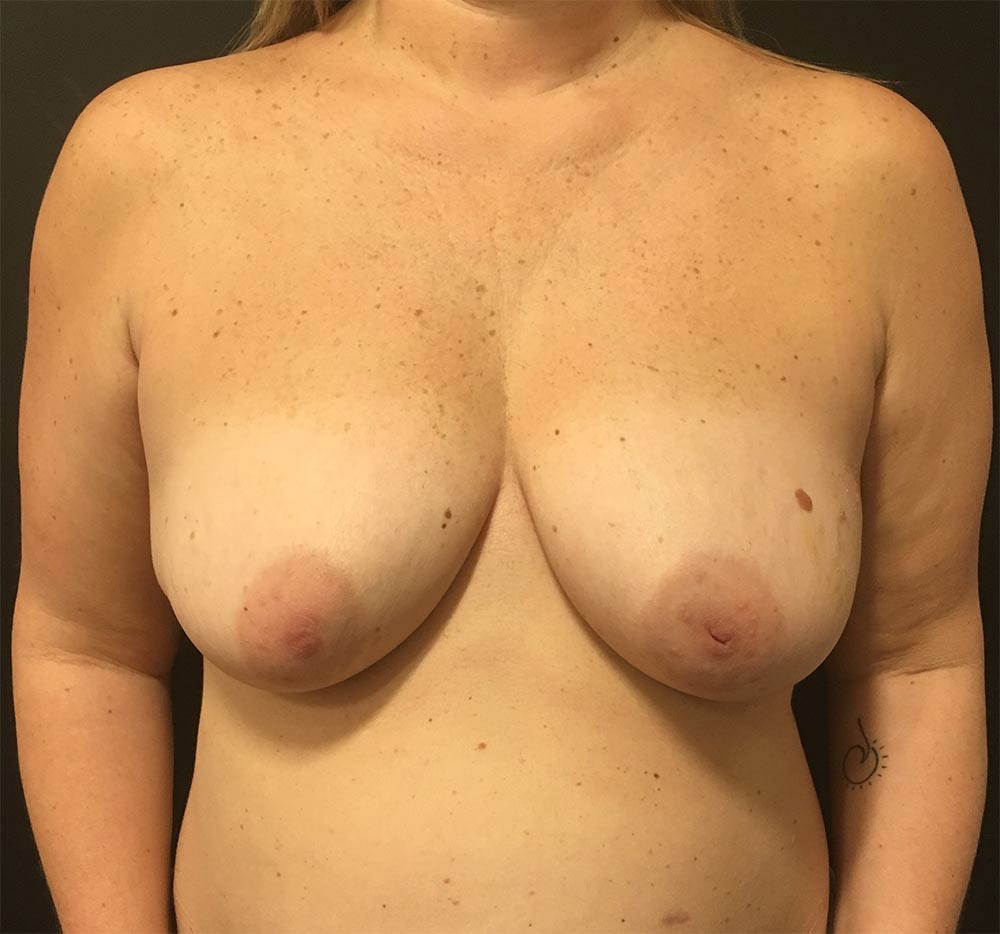Breast cancer is a devastating disease that affects millions of women around the world. For those who have undergone mastectomy, breast reconstruction surgery is an important step in their physical and emotional recovery. There are several options for breast reconstruction, including implants and tissue flaps, the DIEP flap being the most popular out of all flaps.
What is DIEP Flap Surgery?
DIEP stands for “Deep Inferior Epigastric Perforator.” This is a type of tissue flap surgery in which skin, fat, and blood vessels are taken from the lower belly and used to create a new breast. Unlike a traditional TRAM flap, which takes muscle as well as fat, the DIEP flap procedure only uses the fat and skin, preserving the abdominal muscles and minimizing discomfort and weakness.


Pre-Operative Planning before DIEP Flap Surgery
Before the surgery, Dr. Jandali will evaluate your abdomen to determine if you have enough tissue to reconstruct the breast(s). Dr. Jandali and his team will get preoperative clearance for surgery from your primary medical doctor. He will also order a CT scan to assess the blood supply to the DIEP flap and plan the surgery. If there is an issue with the blood supply, a different flap from the thighs may be necessary.
How Does DIEP Flap Surgery Work?
During the DIEP flap procedure, Dr. Jandali will make an incision in the lower abdomen to access the deep inferior epigastric vessels which are the blood supply to the flap. These blood vessels are then carefully dissected, disconnected, and then reattached to blood vessels in the chest area. This allows the tissue to be transplanted to the chest and reshaped into a new breast.
DIEP Flap Surgery in Detail
DIEP flap breast reconstruction is performed in the hospital and takes about 4-6 hours for one breast and 8-10 hours for both breasts. This is what you can expect during the procedure:
- Anesthesia: The surgery is performed under general anesthesia so that you won’t feel or remember any part of the surgery. The anesthesia team will perform nerve blocks in both the chest area and the abdomen to help with pain control after surgery. Most patients take minimal to no narcotics after surgery.
- Incision: Dr. Jandali will make an incision in the lower abdomen to access the deep inferior epigastric vessels. The incision is made as low as possible to keep the scar hidden underneath your pants or underwear/bikini.
- Dissection of blood vessels: The blood vessels are carefully dissected through the muscle and the flap is prepared for transfer to the breast.
- Transfer of tissue: The tissue, including skin, fat, and blood vessels, is then transferred and transplanted to the chest. The blood vessels are attached to a new blood supply between the ribs.
- Molding the tissue: Dr. Jandali will use sutures and other techniques to mold the tissue into the desired breast shape.
- Closure of incisions: Drains will be placed in each breast and the abdomen. All of the breast and abdominal incisions will then be closed with absorbable sutures and surgical glue or tape.
- Hospital Recovery: After the procedure, you will be taken to the ICU or an intermediate care surgical floor to be monitored for 48 hours after surgery. These locations have the nursing staff to monitor and ensure good blood flow to the DIEP flaps. You will be eating normally the day after surgery and be up and moving around.
- Discharge from Hospital: You will be discharged on mild pain medication and an aspirin for a month.
Recovery and Aftercare after DIEP Flap Breast Reconstruction
Recovery from DIEP flap surgery typically takes several weeks, with most women returning to work after 2-3 weeks. Most patients can drive within 2-3 weeks. During this time, you will need to avoid heavy lifting, exercise, and other strenuous activities. Patients are allowed to return to the gym and exercise after 8 weeks as long as they have healed without any issues.
It is also important to follow Dr. Jandali’s instructions for aftercare, which will include wound care, pain management, and other guidelines to help you heal properly. Dr. Jandali may also prescribe physical therapy and other treatments to help you regain strength and mobility.
What are the Benefits of DIEP Flap Breast Reconstruction?
- Natural Look and Feel: Because the tissue used in DIEP flap breast reconstruction is your own, the new breast(s) will look and feel more natural than silicone or saline implants.
- Reduced Risk of Complications: Because the procedure does not use any muscle tissue, there is a reduced risk of complications, such as abdominal hernias, bulge, or weakness. Patients also don’t have to worry about complications with implants, such as leakage/rupture, infection, capsular contracture, and problems with radiation therapy.
- Improved Quality of Life: Reconstructive surgery can help restore a woman’s sense of femininity and confidence after a mastectomy, improving her overall quality of life.
- Long-lasting Results: The results of DIEP flap breast reconstruction are long-lasting and do not require replacement or additional surgery over time (compared to implants that need to be exchanged when they leak/rupture).
- Improved Body Contour: In addition to creating natural breasts, the lower abdomen is also contoured, similar to the result obtained by an abdominoplasty (tummy tuck).
Who is a Good Candidate for DIEP Flap Surgery?
Not all women are good candidates for the DIEP flap procedure. To determine if you are a good candidate, Dr. Jandali will consider several factors, including:
- Your age and overall health
- The amount of lower abdominal skin/fat you have
- Previous scars on your abdomen from other surgeries
- Any personal or family risk of clotting disorders
Women who have had a mastectomy and have excess fat in the lower belly are generally great candidates for the DIEP flap procedure. Dr. Jandali will be able to advise you on the best options for your specific case.
Frequently Asked Questions
Will I have scars after DIEP flap breast reconstruction?
Yes, you will have scars after DIEP flap breast reconstruction. Dr. Jandali will carefully place the incisions in locations that should be hidden by clothing or swimsuits. Over time, the scars will fade and become less noticeable.
How long will the results of DIEP flap breast reconstruction last?
The results of DIEP flap breast reconstruction are long-lasting and do not require replacement or additional surgery over time. However, it’s important to maintain a healthy lifestyle and avoid significant weight fluctuations, as this can affect the appearance of the reconstructed breast(s) and the abdomen.
Can DIEP flap breast reconstruction be combined with other procedures?
Yes, DIEP flap breast reconstruction can be combined with other procedures, such as nipple and areola reconstruction or breast reduction or lift on the unaffected breast to create better symmetry. Dr. Jandali can discuss your options with you and help you determine the best course of treatment based on your individual needs and goals.
What are the risks and complications of DIEP flap breast reconstruction?
As with any surgical procedure, there are risks and potential complications associated with DIEP flap breast reconstruction. These can include bleeding, infection, poor wound healing, blood clots, and changes in sensation and numbness. Dr. Jandali will discuss these risks with you prior to surgery and take steps to minimize your risk of complications.
Navigating Your Path to Recovery
The DIEP flap procedure is a desired option for breast reconstruction, offering several benefits over implants. If you are considering this procedure, it is important to work with an experienced and skilled microvascular-trained plastic surgeon who can help you understand the risks, benefits, and what you can expect from the procedure. With proper care and attention, women are able to achieve the results they are looking for and regain their sense of self-confidence and femininity after breast cancer.

